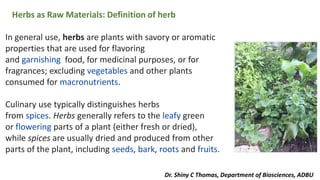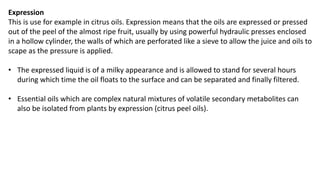The document provides an extensive overview of herbs, highlighting their definitions, uses in culinary and medicinal contexts, and their historical significance in traditional medicine. It distinguishes between herbal and conventional medicine, emphasizing the holistic approach of herbal practices, the various methods of extraction and formulation of herbal products, and the rise in popularity of herbal remedies in modern healthcare. Additionally, it addresses the importance of stability studies for herbal products to ensure quality and safety due to the complexities of plant compositions.





































